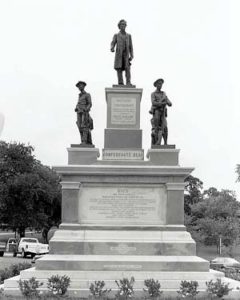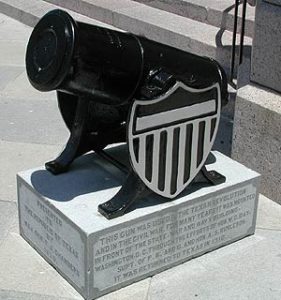One Thursday in July 1974, the year I turned twelve, my dad came home waving discounted plane tickets in the air. We were, he said, going to Jamaica on Saturday. Born and raised in Dallas, I had never been out of the country. For vacations, we’d always gone south to Galveston or Corpus or South Padre or north to Estes Park or Vail. This time, my dad whisked us in the car and drove ten hours to New Orleans to catch a plane to Montego Bay. No questions asked. No discussions. Just get the dog to Toothacre Farms and pack.
It would take the likes of Edward Said to do justice to this episode of Twelve-Year-Old White Girl Goes to Shangri-la. To me, Jamaica seemed romantically colonial. It was a place of geographical and cultural otherness light years away from the bland suburbs blanketing my prepubescent existence. Maybe I didn’t know about umbrella drinks yet, but I could tell on some level that I was entering an exotic world that played neatly into middle-class fantasies I had developed reading Austen and Conrad at the pool. We stayed four nights in Ocho Rios at a luxurious resort, fittingly named the Sans Souci, where every morning Ruby, a housekeeper with skin the color of polished ebony, made us breakfast in our own villa, squeezing us orange juice and fixing us toast. Sightseeing included a trip to Dunn’s River Falls, floating down the Martha Brae on bamboo rafts, touring a coconut plantation, and visiting Rose Hall, where we learned about plantation mistress Annie Palmer, the “White Witch,” whose murder put an end to her evil ways. After our stay at the Resort Without Cares, we drove back to a much less romantic Montego Bay and spent a few nights in a cheap motel across the street from a public beach. My mother led us through an old Jewish cemetery, and we got covered in bug bites. No fresh-squeezed juice at the motel, but at every meal I ordered something chocolate for dessert.
I barely remember the bug bites and can only vaguely recollect the chocolate. What has stayed with me most vividly is my mother’s discomfort with our whiteness and wealth in a world that, rather than being happily romantic, was completely infused with predictably sour colonial relations. This isn’t to say that Dallas in 1974 wasn’t itself a racial mess–the comparison of the Dallas of my childhood and Johannesburg is fruitful. What my mother had begun to question in Dallas she despised in Jamaica. I can still see the look on her face, complaining sotto voce, that she still hadn’t received the iced tea she’d ordered twenty minutes earlier. “It’ll come, it’ll come,” my father said, appeasingly. “Not until every single ice cube has melted!” she hissed, as suited black waiters stood silently at attention around the dining room, rivulets of sweat running into their starched, white collars. “They don’t want us here,” she sniped, “and furthermore, we shouldn’t be here.” In 1974, I didn’t have words to explain my mother’s ill ease, but I suspected, guiltily, that she was right. In my family, that was about as far as a conversation about class and race was going to go.
As a history teacher and mother of triplets, I try to make plenty of room for my kids to discuss the kinds of things that would have caused tension at the dinner table of my own childhood. We take trips, get bitten by bugs, and we eat chocolate. A generation away from the Sans Souci, we try to talk about what we see at museums, historic sites, and monuments. Two years ago, visiting my family in Texas, we toured the State Capitol Building in Austin with my sister. Eating pretzels and sipping juice on the front lawn before taking the official tour, the kids, then seven-and-a-half, began climbing on an array of cannons–smooth, shiny howitzers and rough, bronze field guns–some of which confederate troops had used in the Civil War. We ambled over to the Confederate War Memorial, granite blocks supporting statues of distinguished Southern military men, including, of course, at the top, Jefferson Davis.
“DIED,” I read to the kids, “FOR STATE RIGHTS GUARANTEED UNDER THE CONSTITUTION. The people of the South, animated by the spirit of 1776, to preserve their rights, withdrew from the compact in 1861. The North resorted to coercion. The South, against overwhelming numbers and resources, fought until exhausted.” The kids knew what the Civil War was, but these terms were strange and new. State rights, Constitution, the spirit of ’76, the compact, coercion . . . all these big words and big ideas needed some big explaining. I drew a deep breath and did my best to be evenhanded, gently teasing out the contradictions inherent in these loaded choices of words.
Like most kids their age, Lily, Max, and Sam were thinking rather concretely and were grappling with the difference between time present and time past. All wanted to know, present tense, which side of the war we were on. How to explain that “we” hadn’t been born yet, that the ancestral “we” on my side of the family hadn’t yet left their Russian and Polish shtetls? “Yeah, yeah,” they said, impatiently, “but we were for the North, weren’t we? We didn’t own slaves.” I made one more pass through this one and then continued parsing the inscription. Max and Sam ran off to continue exploring the cannons. “Wait, wait, wait!” Lily interrupted, infused with her usual cut-to-the-chase canny. She whipped her head around and eyeballed her brothers, who were making gun noises and draping themselves over howitzers. “Isn’t having these cannons out here pretty much like celebrating slavery?”
Gulp. After my husband, my sister, and I had managed to put aside our astonishment at the connection Lily had made, we drew all three kids into a brief, pungent talk about the way the stuff we look at in public places tells stories that sometimes surprise us. Maybe the folks who had put up the Confederate War Memorial had wanted to honor the soldiers who’d died fighting for the South. To us, more than a century later, that seemed like honoring people who treated other people in inhumane ways. Besides having these monuments to climb on and read, we adults wondered, what did the kids think should be done with these slabs of marble and bright, shiny cannons? Bury them, said Lily, earnestly. Polish them, said Sam, reverently. Fire them off! shouted an enthusiastic Max.
I have thought quite a bit about this moment over the last year and a half. It reminds me of that long-ago trip to Jamaica and of my own growing awareness, as a child, of race and domination and the past. Too close to the Civil Rights movement of the ’60s and the desegregation struggles of the ’70s to give us kids room to come to our own conclusions, my mother told us what to think. It wasn’t OK to visit Jamaica and relax. White oppression of blacks was continuous, seamless, from colonial plantation times to the present. And my mother, for one, wasn’t going to sit quietly at the table of a place called the Sans Souci, wait for her iced tea, and act carefree. Thirty years later, and I feel, as a mother, that there’s more room to indulge in the illusion that my kids can evaluate the evidence and reach their own conclusions, hoping all the while that they will reach conclusions that parallel my own. And there they were, on the lawn of the Texas State Capitol, offering three different but passionate alternatives to the use of public history. What do we do with the stuff that troubles us? Some would say bury it, others would say respect it, and still others would have us relive and reenact. Not one “right” answer, but three engaged strategies, each spoken with conviction. As a historian and as a parent, I could not have hoped for more.
Thinking about the trips of my childhood and parenthood, I am deeply invested in questioning whether we can ever go anywhere without caring about the past. For those interested in history, is escape ever appropriate? Is it possible to have a pastime without thinking about past times? Our family outings, I hope, can strike a balance between being sans and avec souci. I want my kids to be able to take breaks from the cares of their everyday lives, but I don’t ever want them to get to a point where they plainly and simply just don’t care.
This article originally appeared in issue 1.4 (July, 2001).
Assistant Professor of History at Harvard University, Cathy Corman is author of Reading, Writing, and Removal, forthcoming from University of California Press. When she isn’t teaching courses on early America, the American West, and the history of the book, she is scheming to find ways to travel with her family.





















